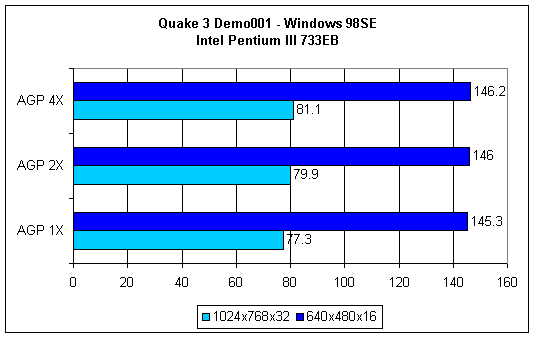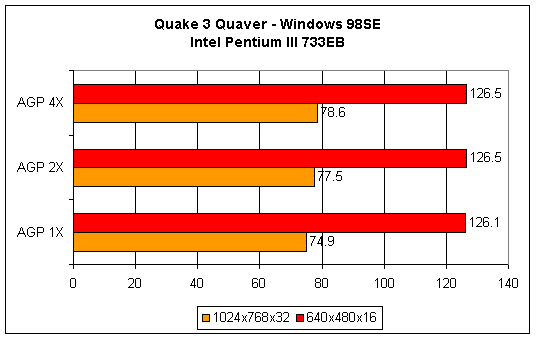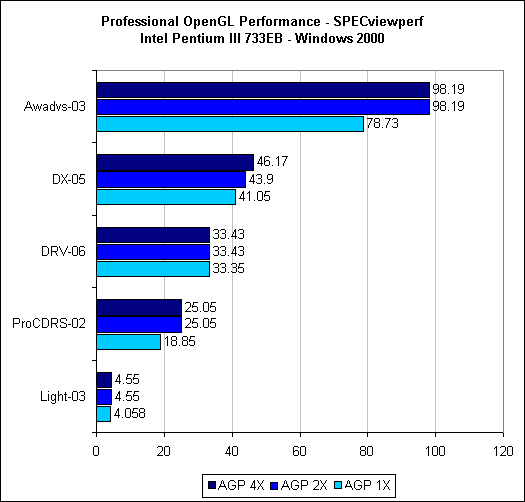Intel 440BX 133MHz Motherboard Roundup (June 2000)
by Anand Lal Shimpi on June 2, 2000 2:06 AM EST- Posted in
- Motherboards
Another one of the paper advantages the i820 and Apollo Pro 133A chipsets hold over the old 440BX is their support for AGP 4X transfer modes which are theoretically twice as fast as the AGP 2X transfer rates supported by the BX chipset.
The 32-bit wide AGP bus, when operating in 2X mode allows for a peak transfer rate of 533MB/s. The same AGP bus, when operating in 4X mode allows for a peak transfer rate of 1.06GB/s. Going by those two numbers alone, you definitely see where AGP 4X can hold a performance improvement over AGP 2X, but if you take into account that the amount of available memory bandwidth on your graphics card is going to be between 3 – 5GB/s (2.7GB/s for GeForce and 5.3GB/s for GeForce 2), all of the sudden this 1.06GB/s of memory bandwidth offered by AGP 4X isn't all that great.
The performance hit you get when going from local memory on your graphics card to system memory via the AGP bus is so great that the difference between the AGP 4X transfer rates and AGP 2X transfer rates remains of very little significance.
Another thing to take into account is that, since the BX chipset only supports an AGP to FSB ratio of 2/3 or 1/1, at 133MHz FSB the AGP bus will be running at 89MHz which is a full 33% over the 66MHz specification. This also translates into a higher transfer rate across the AGP bus since the operating frequency of the bus is higher. More specifically, at 89MHz, you get something along the lines of an AGP 3X transfer rate although a bit slower than what that would actually be (since 100MHz AGP would theoretically be equal to AGP 3X). The actual peak transfer rate across the AGP bus then becomes around 712MB/s which is a 34% increase over the 533MB/s of AGP 2X.
In order to prove that the difference between AGP 4X and AGP 2X is negligible, we naturally ran a set of benchmarks comparing the two. In order to eliminate all potential bottlenecks and truly compare AGP 4X and AGP 2X, we ran the benchmarks on an i820 platform with a GeForce 2 GTS. For comparison's sake, we've included AGP 1X scores as well.

As you can see, in a normal gaming situation, there is very little difference between AGP 4X and AGP 2X.

Even in a memory intensive situation such as Quaver, the difference is not that great. Although in this particular case, the GeForce's S3TC support as well as enhanced texture management routines that are a part of the 5.22 Detonator drivers increase the efficiency of the use of local graphics memory thus minimizing the need for AGP texturing.

In a high end test which is represented by SPECviewperf, the performance difference between AGP 2X and AGP 4X is negligable but there is definitely a huge difference present between AGP 1X and the latter two transfer modes.










0 Comments
View All Comments